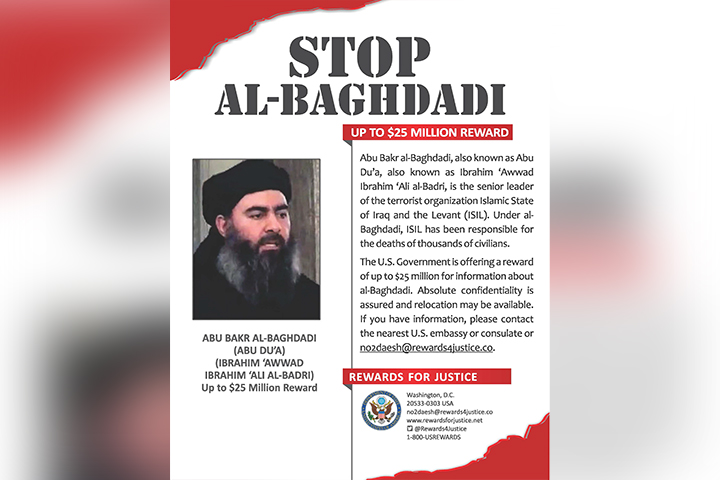Abu Bakr al-Baghdadi — the man who led ISIS as it slaughtered thousands and spread extremist ideology around the world — is dead, according to the U.S. president.

On Sunday, Donald Trump said that al-Baghdadi died by suicide in a tunnel in Syria’s Idlib province, near the border with Turkey.
He detonated an explosive vest after being pursued in a “dangerous and daring” nighttime raid by U.S. special operations forces, according to Trump.
“Baghdadi has been on the run for many years, long before I took office,” Trump said at a press conference Sunday morning. “But at my direction, as commander-in-chief, the United States obliterated his ‘caliphate’ 100 per cent in March of this year. Today’s events are another reminder that we will continue to pursue the remaining ISIS terrorists to their brutal end.”
While the actions of ISIS militants have become notorious around the world, al-Baghdadi’s name is less known.
Security expert Stephanie Carvin said that al-Baghdadi kept a lower profile than, say, former al-Qaida leader Osama Bin Laden, to protect his security.
But his obscurity also fit with the Islamic State’s style of terrorism. The movement he led was much easier to join than al-Qaida, which had strict barriers to entry, she said.

“He made it a mass movement,” said Carvin, a professor at Carleton University’s Norman Paterson School of International Affairs. “He made it about people who were in the Islamic State. He made it about the movement. He didn’t make it as much about himself as perhaps, say, Osama did.”
The Associated Press reports that al-Baghdadi has only made one public appearance.

Get daily National news
In a 2014 sermon at a mosque in Mosul, Iraq, he urged Muslims around the world to swear allegiance to the caliphate and obey him as its leader.

“It is a burden to accept this responsibility to be in charge of you,” he said. “I am not better than you or more virtuous than you. If you see me on the right path, help me. If you see me on the wrong path, advise me and halt me. And obey me as far as I obey God.”
Al-Baghdadi was born in Samarra, Iraq, in 1971, according to the U.S. State Department.
He has many aliases, including Abu Du’a, Ibrahim ‘Awwad and Ibrahim ‘Ali al-Badri. Al-Baghdadi was imprisoned after being captured by U.S. forces during the Iraq war.
He was senior leader of ISIS in 2014, the year the group seized control of parts of Syria and Iraq.
In March, ISIS militants were defeated at Baghouz, the organization’s last section of Syrian territory.
Al-Baghdadi remained among the few commanders still at large despite multiple claims in recent years about his death and even as his so-called caliphate dramatically shrank, with many supporters who joined the cause either imprisoned or jailed.
Following the defeat, Baghdadi was reported to be in Iraq, according to a United Nations report released in July.
He appeared in a propaganda video in April in which he said ISIS was claiming responsibility the Easter Sunday bombings in Sri Lanka that killed more than 250 people.
In the years prior to his death, a reward of up to US$25 million was posted for information leading to his capture. A reward of US$10 million was offered in 2011, but the bounty rose after he became leader of the so-called caliphate.
In addition to deaths in Iraq and Syria, ISIS has taken credit for terrorist attacks around the world.
The militant group harnessed social media to recruit, spread propaganda and document brutal executions. In his speech on Sunday, Trump pointed to those notorious videos.
“The forced religious conversions, the orange suits prior to so many beheadings, all of which were openly displayed for the world to see. This was all that Abu Bakr al-Baghdadi, this is what he wanted. This is what he was proud of,” he said.
–With files from the Associated Press and David Lao, Global News











_848x480_1397405763961.jpg?h=article-hero-560-keepratio&w=article-hero-small-keepratio&crop=1&quality=70&strip=all)

Comments